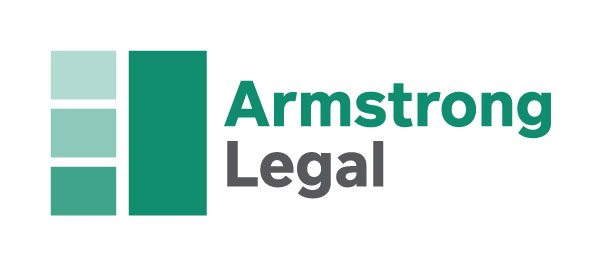Domestic Violence Statistics
Statistics reveal that a disturbingly high number of Australians will experience domestic violence in their lifetime. Domestic violence can have a detrimental impact on all aspects of a victim’s life, including their health, wellbeing, education, relationship, and housing status. This article provides a definition of domestic violence and examines domestic violence statistics in Australia with a particular focus on those that are especially vulnerable to domestic violence.
What is Domestic Violence?
Family violence is violent conduct between family members (including parents, children, siblings, and partners). Domestic violence is a type of family violence and refers specifically to violence between intimate partners (either current or former). Domestic violence includes emotional, verbal and physical abuse, as well as intimidation and stalking. This includes psychological abuse such as intimidation and humiliation, controlling access to money, monitoring activities, and isolating the victim from support networks. Physical abuse includes both assault and sexual violence between intimate partners.
Australian Domestic Violence Statistics
The Australian Bureau of Statistics (ABS) reported in 2017 that 1 in 6 women and 1 in 16 men had experienced domestic violence from an intimate partner. This equates to over two million Australian men and women who have experienced domestic violence.
The most obvious effect of domestic violence on victims is bodily injury, including fatalities. In 2015 domestic violence resulted in 223 deaths in Australia. However, research statistics show that a number of other disorders are causally linked to domestic violence, including depression, anxiety, alcohol abuse, miscarriage, suicide and self-harm. Statistics suggest that 1.6% of total community expenditure in relation to disease and injury can be directly attributed to domestic violence.
Statistics from the 2017-2018 financial year provide a snapshot of domestic violence in Australia. In that time 21,300 adults were hospitalised following assaults. Of these, 4,300 patients stated that an intimate partner was responsible for their injuries.
Over half of these hospitalisations (61%) involved an injury to the head or neck, including 229 instances of brain injury. A total of 292 pregnant women were hospitalised as a result of domestic violence. Injuries to the abdomen were more common amongst pregnant females (33%) compared to non-pregnant females (12%). Women within this group of domestic violence victims were statistically more likely to be assaulted using bodily force (67%), while 15% were attacked with a blunt object, and a sharp object was used in 7.1% of cases. Men hospitalised following domestic violence were statistically more likely (64%) to have been assaulted with an object than just with bodily force (28%).
Domestic Violence Statistics – Who is Most Likely to Be the Victim?
Domestic violence occurs across all ages and demographics, but some groups are more at risk than others. A woman is more likely to be the victim of domestic violence than a man in every age group, except those over 85 years of age. In 2017-2018, nearly half of all hospitalisations of adult women were the result of domestic violence.
People living in the lowest socioeconomic areas are six times more likely to be hospitalised as the result of domestic violence compared to those living in the highest socioeconomic areas. 45% of all domestic violence hospitalisations involve people who live in the lowest socioeconomic areas.
People living in rural areas are more likely than those living in metropolitan locations to be hospitalised as the result of domestic violence. People from very remote areas are the most likely to be hospitalised (562 people in 100,000), compared to those from major cities (only 12 in 100,000).
Racial and ethnic origin also impacts on the statistical likelihood of someone becoming a victim of domestic violence. In 2017–18, more than 6,800 Aboriginal and Torres Strait Islander people were hospitalised, of which 48% of admissions were attributed to a domestic violence injury. Aboriginal and Torres Strait Islander females are 34 times more likely to be hospitalised as a result of domestic violence compared to other Australian females. Indigenous males were 32 times more likely to be hospitalised as a result of domestic violence, compared to other Australian males.
Protection for Victims of Domestic Violence
Victims of domestic violence in every Australian state and territory can seek protection from their abusers through a domestic violence order. A domestic violence order is an official document issued by the court that places restraints on the respondent (the person who has committed domestic violence) in an effort to stop threats or acts against the aggrieved (the victim of domestic violence). The domestic violence order will set out rules that the respondent must follow, such as keeping a certain distance from the aggrieved or refraining from certain things, such as drinking or taking drugs around the aggrieved.
A DVO is not a criminal charge and will not form a part of the respondent’s criminal record. It is, however, a criminal offence to disobey the orders set out in a DVO, and a breach of the DVO will add to the respondent criminal history.
If you are experiencing domestic violence, there is help available. For instance, you can access domestic violence leave from work to seek assistance from the police or the community. To access immediate support, you can call:
- 1800RESPECT (1800 737 732)
- Lifeline (13 11 14)
If you need legal help obtaining a DVO or any other assistance related to domestic violence, please contact Armstrong Legal on 1300 038 223 or send us an email.

This article was written by Dr Nicola Bowes
Dr Nicola Bowes holds a Bachelor of Arts with first class honours from the University of Tasmania, a Bachelor of Laws with first class honours from the Queensland University of Technology, and a PhD from The University of Queensland. After a decade working in higher education, Nicola joined Armstrong Legal in 2020.


